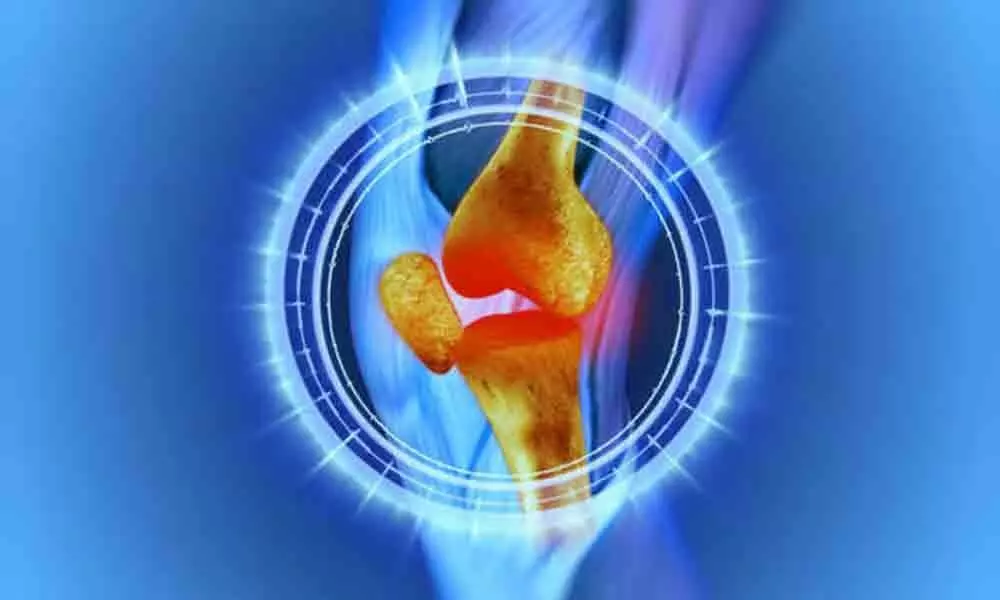Live
- HMPV Outbreaks Spark Global Health Concerns: What You Need to Know
- Gautam Gambhir Faces Criticism Over Tactical Errors in Australia Tour
- CM Revanth Reddy Announces Surprise District Tours Starting January 26
- Telangana's TOMCOM Invites Applications for Driver Jobs in Germany
- Calcutta HC rejects plea by rights body for stall allotment at Kolkata Book Fair
- Bengaluru Beer Prices to Rise by Up to 20% Starting January 20
- My Fans Are Like Disciplined Soldiers: Nandamuri Balakrishna
- Adani Group raises Rs 4,850 crore after selling 13.5 pc stake in Adani Wilmar
- "Jogulamba Gadwal Health Officials Assure Public: No Panic Over HMPV Virus".
- "Charity and Annadanam Program Held on BOSS Hanumanthu Naidu’s Birthday".
Just In
First bone-derived hormone that produces fight-or-flight response identified


Researchers have identified the first bone-derived hormone which produces immediate fight-or-flight response to acute stress. The findings of their study, published in the journal Cell Metabolism, noted that the hormone osteocalcin's acute stress response - or fight-or-flight effects - was different from those mediated by the adrenal gland's hormones such as cortisol, adrenaline, and norepinephrine.
Researchers have identified the first bone-derived hormone which produces immediate fight-or-flight response to acute stress. The findings of their study, published in the journal Cell Metabolism, noted that the hormone osteocalcin's acute stress response - or fight-or-flight effects - was different from those mediated by the adrenal gland's hormones such as cortisol, adrenaline, and norepinephrine.
"The notion that bone mediates the stress response is totally novel, as is the notion that the adrenal glands do not mediate the stress response," said senior author Gerard Karsenty of Columbia University Irving Medical Center in the US. The fight-or-flight response - mediated by the sympathetic nervous system of the body - plays a crucial role in helping animals react to potentially life-threatening situations.
The adrenal glands, known to mediate this response, sit right on top of the kidneys, and release hormones such as adrenaline, norepinephrine, and cortisol - also called glucocorticoid hormones. These secretions trigger a domino effect in the body, increasing the body's energy expenditure, as seen through effects like rise in temperature, heart rate, breathing rate, and blood pressure, preparing the muscles for action.
Karsenty and his team suspected that hormones secreted from the bone could contribute to the acute stress response, based on their hypothesis that the bone's original function was to respond to danger. The bone protects internal organs from trauma, allowing animals to move and escape danger, and also mediates hearing.
While acute stress usually requires immediate responses from the body, one puzzle that remained was how some hormones such as cortisol required hours to alter the body's physiology, which was inconsistent with the immediate need for response to danger. The researchers found that blood levels of the bioactive form of osteocalcin increased by 50 per cent in mice which were restrained for 45 minutes, and 15 minutes after they received a stressful stimulus, the hormone levels rose by 150 per cent.
When the mice were exposed to a cotton swab soaked with a component of fox urine, osteocalcin levels rose again, peaking at 2.5 minutes, and remaining steady for at least three hours.
The researchers also found that circulating levels of osteocalcin rose in humans exposed to stress from public speaking and cross examination. The study noted from genetic experiments in mice that osteocalcin was important for a surge in the body's energy expenditure, circulating glucose levels, temperature, and heart rate upon exposure to external stress factors. The researchers also noted that a single injection of osteocalcin was sufficient to cause an acute stress response.
They found that a brain region called the amygdala - the brain's fear centre - played a role in triggering an osteocalcin surge in response to stress in mice. The researchers note, however, that the osteocalcin response doesn't require the adrenal glands. According to the researchers, the findings explain why patients and animals lacking hormones produced by the adrenal glands still mount responses to acute stress.
Karsenty suggested based on the study that we respond to stress better at younger ages when we have high osteocalcin than when we are older and have much less of it. The bone-derived hormone osteocalcin was known to increase muscle function during exercise -- a necessity for animals attempting to escape danger, the study noted. "Osteocalcin could explain past observations of an intact flight-or-flight response in humans and other animals lacking glucocorticoids and additional molecules produced by the adrenal glands," Karsenty said.

© 2025 Hyderabad Media House Limited/The Hans India. All rights reserved. Powered by hocalwire.com






